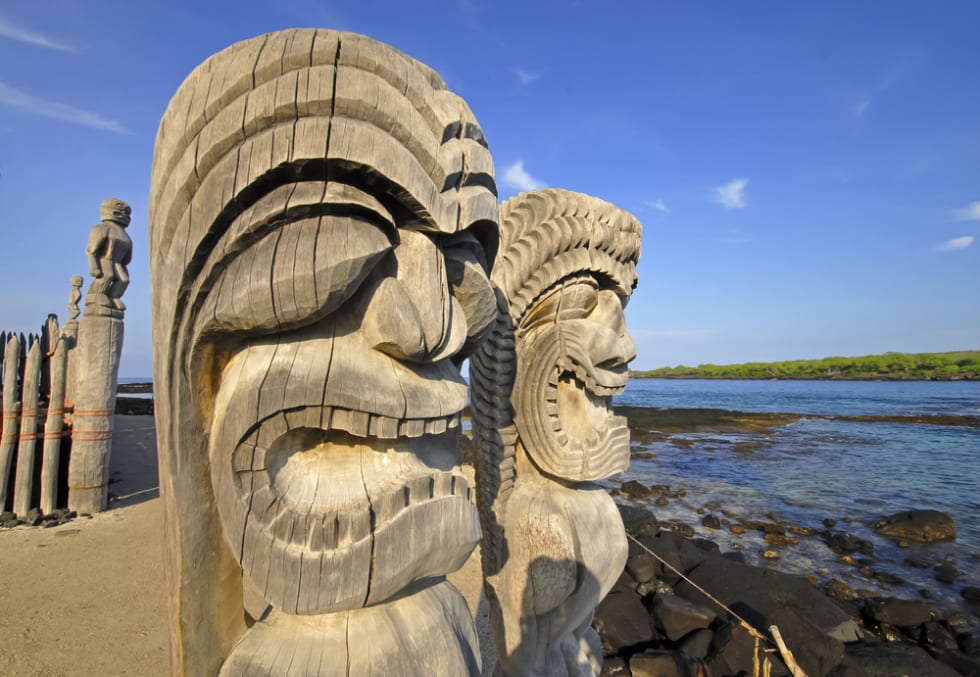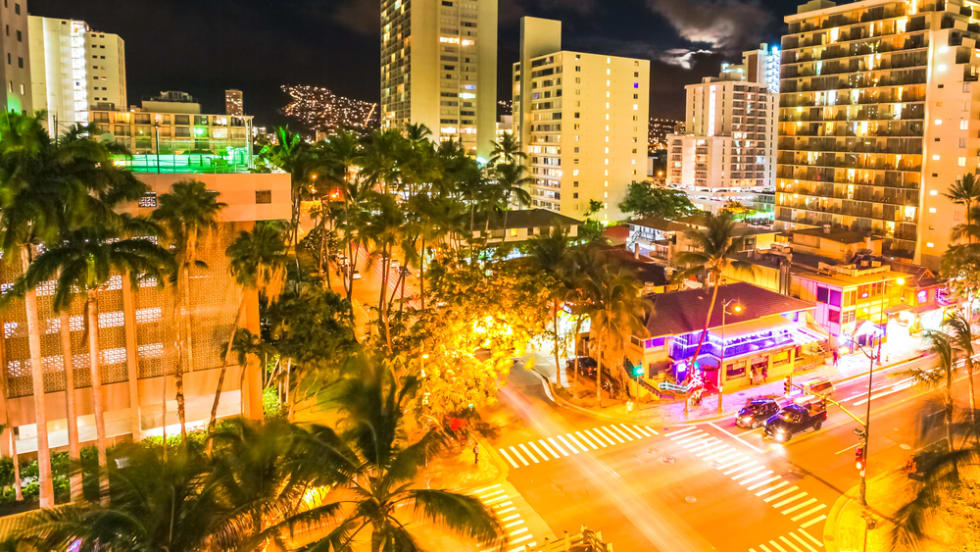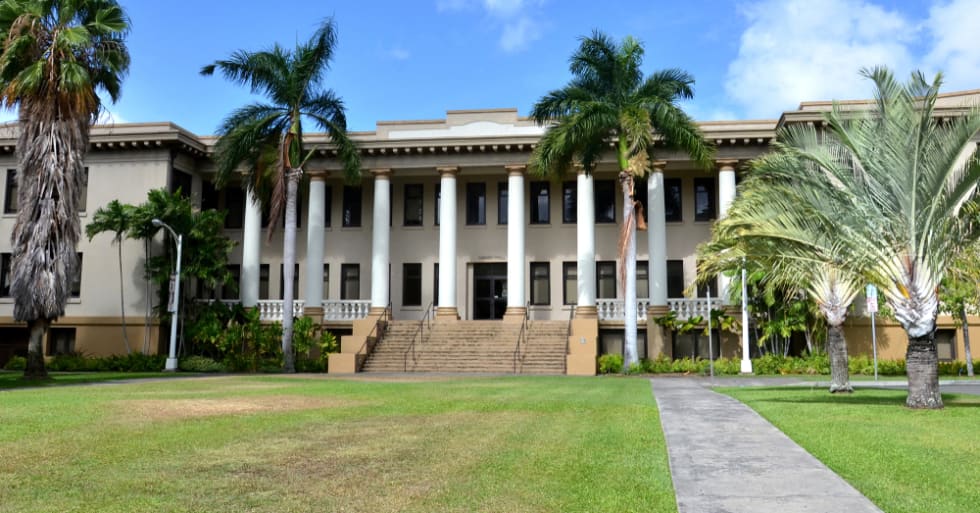Living in Hawaii: 13 Things to Know Before Moving to Hawaii

Life in Hawaii is paradise, which is no surprise its landscape, culture, and weather make it a desirable place for newcomers. The state is known for the loving Hawaiian culture, diverse population, and unlimited access to nature and outdoor recreation. So if you’re ready to pack up and move to the Aloha State, here’s what to know before you go.

1. What's It Like Living in Hawaii
Hawaii is tiny yet densely populated, with 1.4 million people spanning only 1,500 square miles. The state is the eighth-smallest in the country, though it is very diverse, with many bilingual speakers. Nearly 27% of Hawaii residents speak a non-English language such as the most popular languages, Tagalog, Japanese, and Ilocano.
The islands are located 2,000 miles southwest of the contiguous U.S. and make Hawaii the only state within the country that is not geographically located in North America.
Of the main eight Hawaiian islands, seven are inhabited, and only six are open to tourists, locals, and new residents. The names of the eight major islands of Hawaii are; Hawaii, Maui, O’ahu, Kaua’i, Moloka’i, Lana’i, Ni’ihau, and Kaho’olawe.
Each island offers a diverse landscape, including everything from bustling cities, coastal towns, and wide-open spaces. Snow-capped peaks, lava deserts, misty plateaus, and picturesque beaches welcome locals looking for recreation opportunities or a new place to call home.
2. Cost of Living in Hawaii
Hawaii isn't known for its cheap lifestyle. After all, living in paradise comes at a price. However, it's possible to find a reasonable cost of living depending on where you live. The overall cost of living in Hawaii is 170, more than the US average of 100. Try using our rent calculator to estimate how much to spend on rent.
Using the state capital, Honolulu, as an example, according to Payscale, the cost of living in Hawaii is 88% higher, and housing is an overwhelming 202% higher than the national average.
Here’s an idea of how much things cost when moving to Hawaii, as reported by Payscale:
- Energy bill: $316.71
- Loaf of bread: $5.39
- Doctor’s visit: $128.31
- $3.52 for a gallon of gas
Large cities like Honolulu are the most expensive. However, you can still find rent specials or team up with roommates if needed.
Hilo
Hilo is a small relaxed town located on the island of Hawaii, which is colloquially referred to as the Big Island. Research shows that the average monthly net salary in Hilo is $1,700. Additionally, the average cost of a meal at an inexpensive restaurant in the city is $15.00.
Median rents in Hilo stand at $960 for a one-bedroom and $1,650 for a two-bedroom. That's above the national average of $1,101 for a one-bedroom.
Wailuku
Wailuku is a lovely little town located on the island of Maui. It's close to everything, including services, healthcare, and shopping, and also offers its residents cooler weather on the Wailuku hillside.
Like Hilo, the cost of living in Wailuku is more reasonable than in Honolulu. However, it still comes at a premium. Research shows that the average monthly net salary in Wailuku is $2,000. Additionally, the average cost of a meal at an inexpensive restaurant in the city is $32.50.
Median rents in Wailuku stand at $1,750 for a one-bedroom apartment and $2,350 for a two-bedroom. Of course, the closer you live to the beachfront or urban amenities, the more expensive your rent is.
Honolulu
If you're living a single life in Honolulu, located on the island of Oahu, you'll need a minimum of $1,409.74 without rent. For a family of four, those costs go up to $5,017.60.
Although the pandemic impacted the rental market, Honolulu's rents are notoriously expensive. Rents have been on the decline. However, they’ll likely bounce back as conditions improve. A one-bedroom runs $2,163 and a two-bedroom apartment runs for $2,763, according to the latest rent report.
Affordable, Family-Friendly Cities
Hawaii offers family-friendly beaches, parks, theme parks, and festivals. There's always something to do or see in the Aloha State.
Kaneohe, on Oahu, and Kahului, on Maui, are among the most affordable cities for families in Hawaii. But, depending on where you live, schools can be an issue. So, it may take some creativity to find the right district. A budget for private schools may also be necessary.

3. Taxes in Hawaii
Hawaii has a progressive income tax, with high earners paying one of the highest marginal income tax rates in the U.S. The good news for homeowners is that property taxes are relatively low, with the country's lowest effective property tax rate on average.
A general excise tax that businesses pay on all business activities, typically passed on to consumers, exists in Hawaii, even though Hawaii doesn’t technically have a state sales tax.
4. Who’s Moving to Hawaii?
According to Apartment List’s most recent migration report, the highest share of people moving to Honolulu are from Los Angeles, New York, and San Francisco. Renters currently living in Honolulu are considering moving elsewhere, mostly to the contiguous U.S. They’re currently searching for apartments in Seattle, Las Vegas, and Los Angeles.
5. Hawaii Job Market and Economy
Compared to other similarly sized metropolitan areas across the county, Honolulu has a less healthy job market. Thankfully, the average annual salary in Honolulu is currently $57,060, slightly above the national average of $53,490. Unfortunately, the unemployment rate is currently 10.3%, above the national average of 8.1%.
Not surprisingly, tourism is the most crucial industry across Hawaii. Other prominent sectors, especially in Honolulu, include health care.
The biggest employers in Honolulu include the U.S. Department of Defense, Hawaiian Electric, Aloha Air Cargo, and Bank of Hawaii. University of Hawaii - Manoa and Hawaii Pacific University also offer the region many higher education jobs.

6. Public Transportation in Hawaii
There are some public transportation options available throughout Hawaii, including TheBus on Oahu, Maui Bus on Maui, Kauai Bus on Kauai, and Hele-On Bus on Hawaii. Unfortunately, there are no public bus systems on Lanai and Molokai.
Uber and Lyft are also widely available in the more densely populated regions of the islands. But, in more rural areas, it might be challenging to rely on these options for transportation.
Car culture is strong throughout the Aloha State. It's tricky to get around without one. The good news is, once you get out of the cities, driving could turn into a favorite pastime around Hawaii. Since you are on an island, most drives will include scenic views of the Pacific Ocean or mountain ranges throughout the state.
7. Weather in Hawaii
Hawaii weather may be the reason you move to the Aloha State. Sunny weather, mild winters, and warm weather year-round are a win for newcomers. With proximity to the equator, tropical weather is consistent throughout the year.
There are some minor variations in weather across the state, with climates and weather ranging from beachfront warmth to relatively chilly mountain air. However, wherever you live in Hawaii, frigid winter temperatures are rare.

8. Hawaii Attractions
Hawaii is a playground for attractions, from national parks, museums, historical landmarks, etc.
National Parks
Hawaii is home to two national parks located on different islands.
Hawai’i Volcanoes National Park
Situated on the Big Island is Hawai’i Volcanoes National Park, which encompasses the summits of Mauna Loa and Kilauea, two of the world’s most active volcanoes. Here you will find some of the most unique biological, geological, and cherished landscapes worldwide.
Haleakala National Park
Haleakala National Park is located on the island of Maui, with out-of-this-world sub-tropical rainforest and volcanic landscapes. Here, there are countless stories of modern and ancient Hawaiian culture.
Notable Museums
In addition to national parks, Hawaii is also home to 90 museums.
Bernice Pauahi Bishop Museum
Located in Honolulu’s historic Kalihi district on the island of Oahu is the Bernice Pauahi Bishop Museum. This museum is the world’s most extensive collection of Polynesian and scientific objects, including more than 13.5 million insects.
World War II Valor in the Pacific National Monument
The World War II Valor in the Pacific National Monument honors the sites, people, and events from the United States and their role during World War II. Pearl Harbor on Oahu hosts five of Hawaii’s contributing sites, including Battleship Row, Ford Island, the USS Oklahoma Memorial, the USS Utah Memorial, and the USS Arizona Memorial.
Historical Landmarks
Across the islands that make up the state of Hawaii, you will find 33 historical landmarks.
‘Iolani Palace
Hawaii is home to the only royal palace in the U.S., The Iolani Palace, which can be found on the island of Oahu. The last sovereign monarch of Hawaii, Queen Lili’uokalani, was held here under house arrest as her kingdom was being overthrown.
Kealakekua Bay State Historical Park
On the island of Hawaii is the Kealakekua Bay State Historic Park, located 12 miles south of Kailua-Kona. This location marks the spot where Captain James Cook made contact with the ancient Hawaiians.
Things to Do
From unbeatable shorelines and picturesque mountain ranges, Hawaii truly has it all. Here are some of the things you must do while living in this state.
Hike to Diamond Head State Monument
The Diamond Head crater was formed 300,000 years ago and today sits on the eastern edge of the Waikiki coastline on the island of Oahu. The military history, stunning coastal views, and historic hiking trails make this a fun activity.
Drive the Road to Hana
On the island of Maui, the scenic Road to Hana is undoubtedly one of the top attractions within the state. The drive weaves around 600 curves over 52 miles and is one of the most beautiful activities.

9. Food Scene and Nightlife in Hawaii
Hawaii's melting pot of different cultures offers something for everyone. Farmer's markets are very popular, including the KCC Farmers Market on Kapi’olani Community College’s campus, which offers everything from local favorites, like pineapples and papayas, to things outside of the norm like hydroponically raised sea asparagus from the North Shore.
You’ll also find plenty of restaurants and bars, many of which provide live entertainment in the evenings. You can also hit the clubs in downtown areas on Oahu, although you won’t find much of this on the surrounding islands.
There’s no shortage of shopping in Hawaii. Countless shopping malls, outlets, and more can be found across numerous islands. For example, the famous Ala Moana Center on Oahu has over 350 shops and restaurants.
10. Major Annual Hawaii Events
Hawaii's pristine weather and views make it a popular choice for major events, including:
Merrie Monarch Festival - the week of Easter is one of Hawaii’s most important traditions, the Merrie Monarch Festival on the island of Hawaii.
Lei Day - Lei Day is a statewide celebration of the aloha spirit on the first of May each year.
Lantern Floating Festival - Memorial Day brings the Lantern Floating Festival at Ala Moana Beach Park on Oahu.
Kamehameha Day Celebration - June 11th is a statewide celebration honoring King Kamehameha I.
Kapalua Wine and Food Festival - Every June, there is a four-day culinary celebration in the northwestern coastal region of Maui, Kapalua.
Maui Film Festival - Every summer, film lovers gather under the stars for this open setting at the Maui Film Festival located in Wailea.
Hawaii Food and Wine Festival - Roy Yamaguchi and Alan Wong co-founded the two-week-long festival that now occurs every October.
Ironman World Championship - The Ford Ironman Triathlon World Championship has occurred in Kailua-Kona on Hawaii island since 1981.
Honolulu Marathon - Taking place in December, the Honolulu marathon is on the island of Oahu and is the fourth largest marathon in the country.
11. Sports in Hawaii
The college sports put on by the University of Hawaii (UH) are amongst the biggest games in the islands since there are no major league sports teams in Hawaii.

12. Top Universities in Hawaii
In Hawaii, there are four public and three private universities.
Public Universities:
- The University of Hawai’i at Hilo (Hawaii Island)
- The University of Hawai’i at Manoa (Oahu)
- The University of Hawai’i at West Oahu (Oahu)
- The University of Hawai’i at Maui College (Maui)
Private Universities:
- Hawaii Pacific University (Oahu)
- Brigham Young University (Oahu)
- Chaminade University of Honolulu (Oahu)
13. What City in Hawaii Should You Make Your Home?
Hawaii's best city to move to depends on your lifestyle preferences, career aspirations, and budget.
Moving to Honolulu is ideal if you work in hospitality or government agencies and want access to world-class amenities and culture. You can easily take a day trip to the beach or mountains to escape the urban bustle on weekends. Just remember, living in this bustling city comes at a cost.
Lahaina on the island of Maui is a historic west coast community that today is a booming tourist destination. It’s highly accessible, is known for its fantastic beaches, and has touches of old town charm.
If you’re looking to get away from the tourists and live the authentic small-town feel of Hawaii, Hilo on the Big Island is an excellent spot for you. The cost of living is low, and for those in education, there is a university located here.
Final Thoughts
Ready to move to Hawaii's postcard-perfect beaches, resort towns, or thriving cities, but unsure about the price of living in Hawaii? Hopefully, you’ve got a better idea and can start searching around in some of your ideal cities.
Register for Apartment List to find your perfect neighborhood and apartment in Hawaii.
FAQs: What to Know Before Moving to Hawaii in 2022:
What’s the weather in Hawaii?
Sunny weather, mild winters, and warm weather year-round are a win for newcomers. In addition, the islands' proximity to the equator ensures the tropical weather is consistent throughout the year.
What’s the timezone in Hawaii?
Hawaii’s time zone is Hawaii-Aleutian Standard Time (HST). It is also Greenwich Mean Time - 10 (GMT-10), five or six hours behind New York City, depending on the time of year.
What to do in Hawaii?
Hawaii. In addition, Oahu is home to countless historical museums, which are also worth checking out.
What region is Hawaii In?
The islands that make up Hawaii are found in the Oceanic Region of the Pacific Ocean, 2,000 miles from the U.S. mainland.
What are the benefits of moving to Hawaii?
Hawaii's welcoming culture, unbeatable weather, and magnificent landscape make it an attractive option for college students, millennials, and retirees looking for a desirable place to live, work, and play. In short, moving to Hawaii offers tons of benefits!
What are the pros and cons of living in Hawaii?
The pros of living in Hawaii include living in true paradise, unlimited access to nature, delicious local fruits and vegetables, and diversity. The cons of living in Hawaii include the traffic, limited public transportation, high cost of living, and the potential for island fever. Every city has its pros and cons.
What’s the best neighborhood to move to in Hawaii?
The five best neighborhoods in Hawaii are Honolulu, Kahala, Wailea, Lahaina, and Paia.
What’s it like living in Hawaii?
Each island within Hawaii offers a diverse landscape, including bustling cities, coastal towns, and wide-open spaces. Snow-capped peaks, lava deserts, misty plateaus, and picturesque beaches welcome locals looking for recreation opportunities or a new place to call home.
What are the taxes in Hawaii?
Hawaii has a progressive income tax, with high earners paying one of the highest marginal income tax rates in the U.S. The good news for homeowners is that property taxes are relatively low, with the country's lowest effective property tax rate on average.
What jobs are popular in Hawaii?
Not surprisingly, tourism is an essential industry across Hawaii. However, healthcare is another very prominent sector, especially in Honolulu.
What universities are in Hawaii?
In Hawaii, you will find the University of Hawai’i at Hilo (Hawaii Island), the University of Hawai’i at Manoa (Oahu), the University of Hawai’i at West Oahu (Oahu), the University of Hawai’i at Maui College (Maui), Hawaii Pacific University (Oahu), Brigham Young University (Oahu), and Chaminade University of Honolulu (Oahu).
What are things to do in Hawaii?
There are plenty of things to do in Hawaii, whether you like spending your time exploring year-round events or taking a hike. Or, if you consider yourself a bit of a foodie, the farmer's markets of Hawaii will not disappoint. Unfortunately, finding something to do in Hawaii can be challenging because you have so many options.
Share this Article

Explore properties in Columbus, OH


